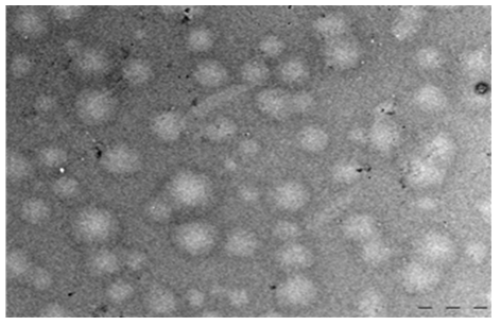
Interaction of curcumin with berberine hydrochloride in Nanoemulsion
Abstract
Curcumin, a phytochemical, has various pharmacological uses so also is berberine hydrochloride, a phytochemical alkaloid. These chemicals are extensively used in many bodily ailments, ranging from cancer, obesity and attendant diabetes including glaucoma to anti-inflammation. However, these compounds are quite insoluble in an aqueous system, which limits their bioavailability but they are liberally soluble in nanoemulsion. Nanoemulsion is a nano-sized oil droplet that is dispersed in water using a surface-active agent (surfactant), oil and a short chain alcohol. An investigation of the interaction between these pharmacologically important compounds was carried out in this medium using steady-state fluorescence and UV-Vis spectroscopic techniques. The data obtained showed that this interaction led to the quenching of curcumin fluorescence by berberine hydrochloride with a bi-molecular quenching rate constant of 2.839 x 1013/M-s and an interaction constant of 3.63 x 1103 in a 1:1 molar complexation ratio. Using the Forster mechanism, the estimated Forster radius for this interaction (Ro) is estimated to be about 27.70 Å and the interaction distance (r) between these reacting molecules is calculated to be about 31.40 Å.
Full Text:
PDFReferences
- E.F. de Olivera, J.V. Tosati, R.V. Tikekar, A.R. Monteiro, N. Nitin, Postharvest Biology and Technology, 2018, 137, 86-94.
- S. Izui, S. Sekine, K. Maedaa, M. Kuboniwa, A. Takada, A. Amano, H. Nagata. J. Periodontol. 2016, 87(1), 83-90.
- F.K. Naglaa, G.k. Eman. Am. J. Biomed. Sci. 2014, 6(3), 191-200.
- H. Itokawa, Q. Shi, T. Akiyama. S.L. Morris-Natschke, K.H. Lee. Chinese Medicine. 2008, 3(11), 1-3.
- H. Hatcher, R. Planalp, J.Cho, F.M. Torti S.V. Torti. Cell. Mol. Life Sci. 2008, 65, 1631-1652.
- R.A. Sharma,A.J. Gescher, W.P. Steward. European Journal of Cancer. 2005, 41, 1955-1968.
- S.C. Gupta, S. Patchva, W. Koh, B.B. Aggarwal. Clin. Exp. Pharmacol. Physiol. 2012, 39(3), 283-299.
- T. Matsuda, T. Maekawa, K. Hadika, H. Bando, Y. Takeda, H. Yamaguchi. J. Agric. Food Chem. 2001, 49, 2539-2547.
- S. V. Jovanovic, C.W. Boone, S. Steenken, M. Trinoga R.B. Kaskey. J. Am. Chem. Soc. 2001, 123, 3064-3068.
- S. Devidevaraj, P. Neelakantan. Asian J. Pharmaceut. Res. Health Care. 2014, 6(1), 1-4.
- L. Shen, H.F. Ji. Trend in Molecular Medicine. 2012, 18(3), 138-144.
- C.S. Beevers, S. Huang. Botanics: Targets and Theory, 2011, 1, 5-18.
- P. Anand, A.B. Kunnumakkara, R.A. Newman, B.R. Aggarwal. molecular pharmaceutics. 2007, 4(6), 807-818.
- B.B. Aggarwal, A. Kumar, A.C. Bharti. Anticancer Research. 2003, 23, 363-398.
- K.M. Nelson, J.L. Dahlin, J. Bisson, J. Graham, G.F. Pauli, M.A. Walters. 2017, 60, 1620-1637.
- W. Tan, Y. Li, M. Chen, Y. Wang. Int. J. of Nanomedicine. 2011, 6, 1773-1777.
- Y.J. Hu, Y. liu, X.H. Xiao. Biomacromolecules. 2009, 10, 517-521.
- J. Yin, H. Xing, J. Ye. Metabolism Clinical and Experimental. 2008, 57, 712-717.
- W. Block. Life Enhancement. 2011, Article 2439, 1-7.
- M. Megyesi L. Biczok. J. Phys. Chem. B. 2007, 111, 5635-5639.
- Y. Sun, K. Xun, Y. Wang, X. Chen. Anti-Cancer Drugs. 2009, 20(9), 757-769.
- http://www.chemfaces.com/dbs/CFN99562.html
- Q. Liu, Z. Xie, T. Liu J. Fan. RSC Advance. 2018, 8, 6075-6082.
- M. Megysi L. Biczok. Chemical Physics Letters. 2006, 424, 71-76.
- J.J. Inbaraj, B.M. Kukielczak, P. Bilski, S.L. Sandvik, C.F. Chignell. Chem. Res. Toxicol 2001, 14, 1520-1534.
- A. Sahu, N. Kasoju U. Bora. Biomacromolecules. 2008, 9, 2905-2912.
- L. Nardo, R. Paderno, A. Andreoni, M. Masson, T. Hankvik, H.J. Tonnesen. Spectroscopy. 2008, 22, 187-198.
- A. Kunwar, A.Barik,K.I. Priyadarsini, R. Panday. BARC Newsletter. 2007, Founders Day Issue 285, 213-219.
- D. Patra, C. Barakat. Spectrochimica Acta Part A. 2011, 79, 1034-1041.
- C.F. Chignell. P. Bilski, K.J. Reszka, A.G. Motten, R.H. Sik T.A. Dahl. Photochem. Phtobiol. 1994, 59(3), 295-302.
- M.O. Iwunze. Monatshefte fur Chemie. 2004, 135, 231-240.
- X.Z. Feng, Z. Lin, L.J. Yang, C. Wang C.L. Bai. Talanta, 1998, 47, 1223-1229.
- http://chem.libretexts.org/Core/Physical_and_Theoretical_Chemistry/Fundamentals
- Horiba Technical Note TRFT-3.
- http://en.wikipedia.org/wiki/F%C3%B6rster_resonance_energy_transfer
- http://goldbook.iupac.org/Ft07381.html
- https://en.wikepedia.org/wiki/Talk:F%C3%B6rster_resonance_energy_transfer
- H. Sahoo. J.of Photochem. and Photobiol. C. 2011, 12(1), 20-30.
- A.J.W.G. Visser, E.S. Vysotski, J. Lee. http://photobiology.info/Experimentals/Biolum-Expt.html
- ThermoFisher Scientific. Fluorescence Resonance Energy Transfer (FRET) Note 1.2.
- S.A. Hussain. An Introduction to Fluorescence Resonance Energy transfer (FRET). Arxiv.org/pdf/0908.1815
- BioTek White Paper 2012.
- J.R. Lakowics. Principles of Fluorescence Spectroscopy, Plenum Press, New York 1982, pp 306.
- M.O. Iwunze. J. of Material Science and Engineering A 2017, 7(1-2), 19-24.
- S.M. Khepde,K.I. Priyadarsini, D.K. Palit, T. Mukherjee. Photochemistry and Photobiology. 2000, 72(5), 625-631.
- N. Kundu, A. Roy, D. Banik, N. Sarkar. J. Phys. Chem. B. 2016, 120, 1106-1120.
- A. Latif, N. Siddiqui, A. Razique, R.R. Sukui. Int. J. of Pharma. Research & Development. 2010, 2(7), 1-5.
DOI: http://dx.doi.org/10.13171/mjc71/01805211015-iwunze
Refbacks
- There are currently no refbacks.
Copyright (c) 2018 Mediterranean Journal of Chemistry
